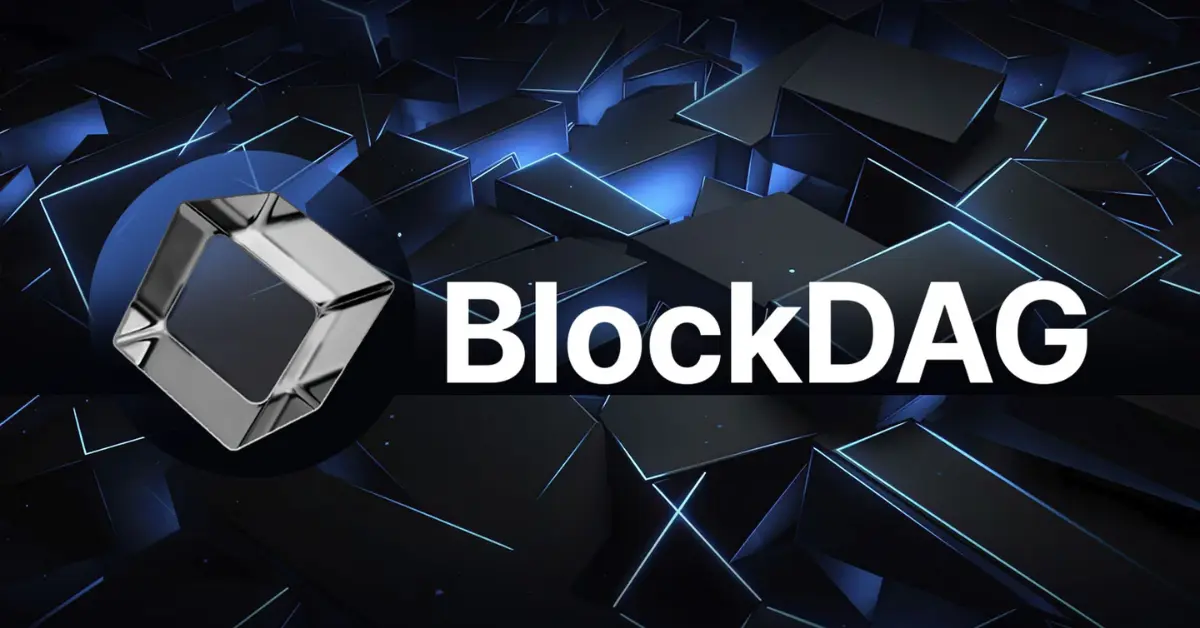BlockDAG (Block Directed Acyclic Graph) is an innovative blockchain architecture designed to improve scalability, security, and transaction speed compared to traditional blockchains like Bitcoin and Ethereum. As the cryptocurrency market evolves, investors and enthusiasts are keenly watching BlockDAG’s price movements, trying to gauge its long-term potential.
In this article, we will explore:
- What BlockDAG is and how it differs from traditional blockchains
- Factors influencing BlockDAG’s price
- Historical price trends (if applicable)
- Expert predictions and future outlook
- Risks and challenges facing BlockDAG
By the end, you’ll have a comprehensive understanding of BlockDAG’s price dynamics and whether it could be a worthwhile investment.
What is BlockDAG?
Before diving into price analysis, it’s essential to understand what BlockDAG is and why it’s considered a potential game-changer in the blockchain space.
BlockDAG vs. Traditional Blockchain
Traditional blockchains (e.g., Bitcoin, Ethereum) use a linear structure where blocks are added one after another in a chain. While secure, this model faces scalability issues, leading to slower transactions and higher fees during peak times.
BlockDAG, on the other hand, allows multiple blocks to be added simultaneously in a graph-like structure. This parallel processing capability enables:
- Higher throughput – More transactions per second (TPS)
- Lower fees – Reduced congestion means cheaper transactions
- Enhanced security – The DAG structure makes it harder for attackers to manipulate the ledger
Projects like Kaspa (KAS) have already implemented BlockDAG technology, demonstrating its real-world viability.
Factors Influencing BlockDAG’s Price
Like any cryptocurrency, BlockDAG’s price is influenced by a mix of technological, economic, and market-driven factors.
1. Adoption and Real-World Use Cases
For BlockDAG’s price to rise significantly, it must see widespread adoption. Key areas where BlockDAG could excel include:
- Payments – Faster and cheaper transactions than traditional blockchains
- Decentralized Finance (DeFi) – Improved scalability for DeFi platforms
- Enterprise Solutions – Businesses needing high-speed, secure ledgers
If major companies or blockchain projects integrate BlockDAG, demand (and price) could surge.
2. Technological Developments
Investors closely watch:
- Network upgrades – Improvements in speed, security, and efficiency
- Developer activity – A strong developer community indicates long-term viability
- Interoperability – Compatibility with other blockchains (e.g., Ethereum, Solana)
Positive developments can drive bullish sentiment.
3. Market Sentiment and Trends
Cryptocurrency prices are heavily influenced by:
- Bitcoin’s performance – If BTC rallies, altcoins (including BlockDAG) often follow
- Regulatory news – Favorable regulations boost confidence; crackdowns cause sell-offs
- Investor hype – Social media trends (e.g., Elon Musk tweets) can cause volatility
4. Supply and Demand Dynamics
- Circulating supply – Limited supply with high demand can drive prices up
- Tokenomics – Staking rewards, burns, and inflation rates impact long-term value
5. Competition
BlockDAG competes with:
- Traditional blockchains (Bitcoin, Ethereum)
- Other scalable solutions (Solana, Avalanche, Polygon)
- Other DAG-based projects (Kaspa, Nano)
Its ability to outperform rivals will influence its price trajectory.
Historical Price Trends (If Applicable)
As of now, BlockDAG is still an emerging technology, and its price history may be limited. However, we can look at similar projects like Kaspa (KAS) for insights.
Kaspa (KAS) Price Analysis
- 2021-2022: Kaspa launched with minimal value but gained traction due to its BlockDAG structure.
- 2023: KAS saw a significant rally, rising over 1,000% as more investors recognized its scalability benefits.
- 2024: Continued growth with increasing adoption and exchange listings.
If BlockDAG follows a similar path, early investors could see substantial returns.
BlockDAG Price Predictions: Expert Opinions
While exact predictions are speculative, analysts use market trends, technology adoption, and historical data to forecast potential price ranges.
Short-Term (2024-2025)
- If BlockDAG gains exchange listings and partnerships, it could see a 2x-5x increase.
- Market sentiment (bullish or bearish crypto cycles) will play a major role.
Mid-Term (2026-2027)
- With mass adoption, BlockDAG could enter the top 50 cryptocurrencies by market cap.
- Price could range between 0.10−1.00, depending on network growth.
Long-Term (2030 and Beyond)
- If BlockDAG becomes a leading scalability solution, prices could exceed 5−10.
- However, competition and technological shifts could also limit growth.
Note: These are speculative estimates—always conduct your own research before investing.
Risks and Challenges
Despite its potential, BlockDAG faces several hurdles:
1. Technological Risks
- Bugs or vulnerabilities in the DAG structure could lead to security breaches.
- Scalability must be proven at a massive scale (beyond test environments).
2. Regulatory Uncertainty
- Governments may impose restrictions on new blockchain models.
3. Market Competition
- Established blockchains (Ethereum, Solana) are also improving scalability.
4. Adoption Barriers
- Convincing developers and businesses to switch from traditional blockchains won’t be easy.
Conclusion: Is BlockDAG a Good Investment?
BlockDAG presents a compelling solution to blockchain’s scalability issues, making it a promising long-term project. However, like all cryptocurrencies, it carries risks.
Key Takeaways:
✅ High potential if adoption grows in payments, DeFi, and enterprise use cases.
⚠️ Risks include competition, regulation, and technological hurdles.
📈 Price could surge if BlockDAG gains traction like Kaspa did.
Final Verdict:
For investors willing to take on risk, BlockDAG could be a high-reward opportunity—especially if bought early. However, diversification and careful research are crucial.
